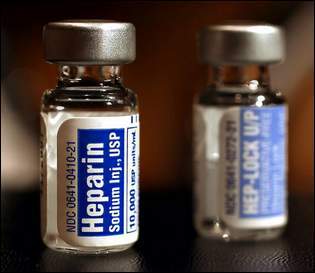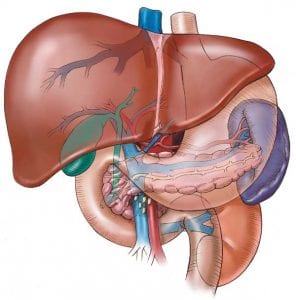 Diabetes And Your Skin: It is estimated that at least one third of diabetics will suffer from a skin disorder following a diabetic diagnosis. Some suggest skin problems may be the first indicator to a primary physician that there may be an issue greater than a dermatological disorder.
Diabetes And Your Skin: It is estimated that at least one third of diabetics will suffer from a skin disorder following a diabetic diagnosis. Some suggest skin problems may be the first indicator to a primary physician that there may be an issue greater than a dermatological disorder.
Bacterial and fungal issues are a fairly common issue for diabetics, but the skin disorders do not stop there. Itching of the lower legs is another common issue diabetics face. This is typically the result of problems with circulation and can often be remedied with skin cream.
A Blood Vessel Top Three
There are three primary skin disorders that affect diabetics and each stem from issues related to alterations in the smallest blood vessels of the legs.
- Necrobiosis Lipoidica Diabeticorum. It is often diabetic women who will develop this condition. Raised blood vessels create sore red bumps on the legs that may develop into a scab-like area. As long as the skin does not break open no medical care may be required.
- Diabetic Dermopathy. Similar to age spots in appearance these flaky patches do not itch and require no treatment.
- Atherosclerosis. Legs that are shiny and have no hair are hallmarks of this skin disorder. It is caused by thickening arteries in the legs of diabetics. Since circulation is a problem for diabetics there are fewer infection fighting white cells to ward off potential problems. Feet tend to become cold and patients often discover changes to their toenails.
Other Skin Disorders
Most of the following skin issues are directly related to diabetes that is out of control. When patients get their blood sugar under control many of these issues tend to go away.
- Acanthosis Nigricans. These darkened skin patches are generally found in diabetics who are overweight and can cause knuckles, elbows and knees to be affected. Weight loss is the best remedy.
- Eruptive Xanthomatosis & Bullosis Diabeticorum. These are blisters that are not generally painful and will heal by themselves.
- Disseminated Granuloma Annulare. May appear a bit like ring worm in either skin tone or various shades of red. Medication is required to manage this skin disorder.
- Digital Sclerosis. A thickening and tightening of skin in Type 1 diabetics. In advanced cases can spread to other areas of the body causing stiff finger, knee or elbow joints.
Skin Care Tips
The American Diabetes Association provides some information on taking care of your skin when you also live with diabetes.
- Keep skin clean and dry. Use talcum powder in areas where skin touches skin, such as armpits and groin.
- Avoid very hot baths and showers. If your skin is dry, don’t use bubble baths. Moisturizing soaps may help. Afterward, use a standard skin lotion, but don’t put lotions between toes. The extra moisture there can encourage fungus to grow.
- Prevent dry skin. Scratching dry or itchy skin can open it up and allow infection to set in. Moisturize your skin to prevent chapping, especially in cold or windy weather.
- Treat cuts right away. Wash minor cuts with soap and water. Do not use Mercurochrome antiseptic, alcohol, or iodine to clean skin because they are too harsh. Only use an antibiotic cream or ointment if your doctor says it’s okay. Cover minor cuts with sterile gauze. See a doctor right away if you get a major cut, burn, or infection.
- During cold, dry months, keep your home more humid. Bathe less during this weather, if possible.
- Use mild shampoos. Do not use feminine hygiene sprays.
- See a dermatologist (skin doctor) about skin problems if you are not able to solve them yourself.
- Take good care of your feet. Check them every day for sores and cuts. Wear broad, flat shoes that fit well. Check your shoes for foreign objects before putting them on.

 The Vietnam War and Diabetes: the U.S. Department of Veteran Affairs (VA) confirmed a link between military service in Vietnam and a higher instance of Type 2 diabetes also known onset diabetes or diabetes mellitus.
The Vietnam War and Diabetes: the U.S. Department of Veteran Affairs (VA) confirmed a link between military service in Vietnam and a higher instance of Type 2 diabetes also known onset diabetes or diabetes mellitus. ADA Legislative Recommendations for the 111th Congress: The 111th Congress is taking place as of this writing. With a new President and many new congressmen and senators in office there will be a concerted push by the American Diabetes Association (ADA) to convince lawmakers to place a high priority on diabetes.
ADA Legislative Recommendations for the 111th Congress: The 111th Congress is taking place as of this writing. With a new President and many new congressmen and senators in office there will be a concerted push by the American Diabetes Association (ADA) to convince lawmakers to place a high priority on diabetes. Diabetes And The Liver: The American Diabetes Association (ADA) indicates the greatest incidence of liver disease is found among those who also have diabetes. More than 12% of those who have diabetes will die from
Diabetes And The Liver: The American Diabetes Association (ADA) indicates the greatest incidence of liver disease is found among those who also have diabetes. More than 12% of those who have diabetes will die from